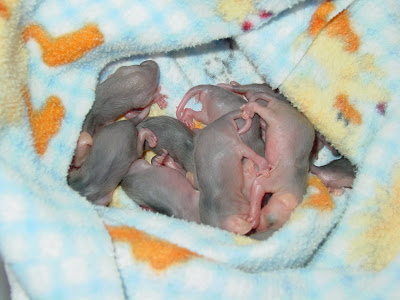
One of the things I have learned with wildlife rehab is about grieving, second guessing and following your instincts as well as your protocal. There are just times when you have gone by the book, and the animal in your care naturally passes OR you have to help with that process because of the lacking of QoL and overall suffering experienced. This is the part I am most challenged, but many respects, there are huge lessons here for me, and I suspect for most of us.
I don't understand the reasoning, especially when hours, and days and months have gone in to one animal in hopes of release back to the wild only to one day find it dead in the bottom of it's enclosure.
This morning, I sit and reflect on the loss of my recent adult possum, who for some unknown reason died in her sleep yesterday morning. I walked through all the steps in her care in my head and on paper. There was no logical reason. Of course I could have done a necropsy to understand more, but with some, it's one of those things that you have to have time for, and the head about to do it.
I realize that grieving comes in different forms. I found myself unable to sleep last night, going over and over in my head and in my dreams what I could have done differently. I wonder if it was just her time, and the dog that caught her did so because she was slowing down anyway.
People say to me...it's just a possum...why would you waste that much time, energy and emotion helping "that animal" when there are a million more out there.
My answer, "because you won't do it. That's why I do it. Because it has a place in the circle of life, and deserves a chance. Because...it's the right thing to do....and of course, because I LOVE Opposums and all wild creatures."
I have seen too many animals pass in this life time. But I have to remember something a friend of mine told me when I had to make the heartbreaking decision to help my one dogs Meme move on to a happier place. To animals, this transition, this moving to the next best place, is no big deal.
I realize now that we humans make it a big deal because we don't know where we go from here...sure if we are religious, or believe in the pearly gates and a place called Heaven, we hope we have been "good enuf" to get a free pass there, for the fear of the "other" fire and brimstone.
I read somewhere that; "right now we cannot do anything about dying, so there is no point fearing death itself". Humm...interesting thought!
A healthy fear of death would be the fear of dying unprepared, as this is a fear we can do something about right? We are encouraged to prepare for a peaceful and successful death and are also inspired to make the most of our very precious human life instead of wasting it right? On the other hand, if we base our life on a realistic awareness of our mortality, we shall regard our spiritual development as far more important than the attainments of this world, and we shall view our time in this world principally as an opportunity to cultivate positive minds such as patience, love, compassion, and wisdom - right?
Well I realized today, this is why animals find this passing no big deal. It's because they have lived ALL of their lives authentically, just as they were supposed to. They don't have to worry about when it's their time or are fearful about passing away with regret, or a mind empowered by the virtuous karma they created.
They are pure in the sense of themselves, just as it should be!!!
So my experience today, and with every other death, has taught me about how to LIVE my life. With every passing of every little furry one, I understand better...how to be today, and not so much worry about tomorrow.
Thank you Ms. P for that reminder in life and in your death.


























